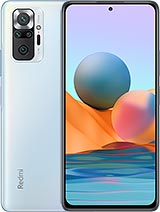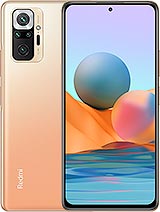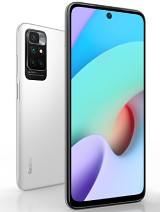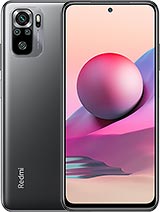Redmi Note 10 Pro vs iPhone 12 Detailed Camera Comparison By TecworkZ
Hey guys its Sagar and today I am going to put the dual cameras on the iPhone 12, up against the quad cameras on the Redmi Note 10 Pro. Before you ask me in the comments, I will tell you why I even bother making these videos. It is to show you guys how far the cameras on mid budget smartphones have come. And you might not have to spend heaps of money to be able to take good images with your smartphone. Keep in mind, the iPhone 12 costs exactly 5 times as much as the Redmi Note 10 Pro, so its images are definitely going to be better. But with this video, we are trying to find out if they are 5 times as good.
Before you look at the camera specs, you should know that this is the Indian variant of the Redmi Note 10 Pro and it comes with a 64 megapixel main camera. There is another variant with a 108 megapixel main camera and in India, Redmi launched it as the Note 10 Pro Max. I know people who are from outside India get a bit confused with Redmi’s naming, so I just wanted to make this clear before hand. We have over 100 image and video samples from both these phones to go through. So to keep this video from getting too long, I will just leave the camera specs on both these phones on this slide.
You can pause the video and go through them if you want. Now before we get to the image and videos samples, if you are new to this channel, please make sure to hit the subscribe button and the bell icon next to it. That way, youtube will notify you, as and when a new video goes up on this channel. Let us start with daytime images. Both these images look really good at a glance, but the more you look at them, the difference becomes more apparent.
Colours and dynamic range is much better in the images from the iPhone 12. Now we know that the Note 10 Pro has a 64 megapixel camera, but in the default mode it captures 16 megapixel pixel binned images. but as I zoom in, you can see there are much more details in the image from the iPhone 12. Even with the larger sensor and higher megapixel count, Note 10 Pro’s images don’t have as many details as the iPhone 12’s images. Note 10 Pro’s images also have a lot more contrast in them, which makes its overall appear a lot darker.
iPhone 12 on the other hand captures less contrast, which sometimes makes its images appear a bit flat. But these images in fact have a lot of information in them. Now the extra contrast in Note 10 Pro’s image does make this particular shot better, but I would have still preferred if it didn’t crush the shadows in most of its other shots. Colours are a bit inconsistent from the Redmi Note 10 Pro. I mentioned this in its dedicated camera review as well, but it is more apparent when we compare these images side by side.
There is a slight green tint in some of its shots. Now you can fix this in editing, but everyone will appreciate it, if they got good looking accurate colours straight out of the camera. Note 10 Pro’s images also have a natural warm tone to them, while the iPhone 12’s images seem to be on the cooler side. Since there is a bit more warmth to its shots, some of the images from the Note 10 pro seem to be a bit more saturated terms of colours. While colours from the iPhone 12 are more true to life and appear as they really were.
Last year, with the green tint Note 9 Pro’s images also had a magenta tint problem in some of the shots. Thankfully, that has been fixed on this Note 10 Pro. If you want to capture even more vibrant colours, you can switch to the Pro colour mode on the Note 10 Pro. I am not a big fan of the oversaturated look, but if you are, you can give it a try. Now I know colour is a personal choice, and everyone perceives them in a different way.
So which of these 2 set of images you like, depends on your colour preference. I like the less contrasty colours from the iPhone 12’s camera, but someone else might like the ones from the Note 10 Pro, and that is completely fine. Even without the HDR mode, there is a clear difference between their images. Since the Note 10 Pro’s images have more contrast these seem to be less details in its darker areas. With the HDR turned on, its images are much better.
I mean it doesn’t do as well as the iPhone 12, but it is still better than without the HDR mode. Now the iPhone brings up the shadows and keeps the highlights in check, so there are no under or exposed parts in its images. Note 10 Pro only manages to do 1 of these things. It will either bring up the shadows and blow up the highlights, or preserve the highlights and crash the shadows. I have used a lot of redmi or Xiaomi phones in the past, to know that their image processing is capable of taking good HDR shots.
So I hope they will fix this with one of the software updates. In this particular shot, I think the Note 10 Pro did better than the iPhone 12 with the highlights. Coming to the close up shots, both these phones have no problem seting the focus on a particular object. Quick and accurate focusing is important for these close up shots. You don’t your camera to keep on hunting for focus in these situations, both these phone do a very good job with that.
The main subject closest to the camera, or the one that you tap on, is in perfect sharp focus, and the background gets a very nice optical blur. The minimum focusing distance is slightly better on the iPhone 12, whereas with the Note 10 Pro you will have to be a few centimetres away from the subject for the focus to be set. That is not an issue, because when you need to get even closer to the subject, you can switch to the Super Macro mode on the Note 10 pro, and take incredible macro shots like these. iPhone 12 doesn’t have a macro lens, so it is out of the race when it comes to taking macro shots. Just look at how incredible these shots look.
They are captured with a 5 Megapixel sensor, so there are good amount of details in them. They still have a lot of noise if you take them indoors, but even then, I am fascinated by how close this camera lets you get to the subject. If macro photography is your thing, just go with the Redmi Note 10 Pro. I don’t know about you guys, but Portrait mode is my favourite mode to shoot in on any smartphone. It is the easiest way to give your smartphone images a professional look.
And because the mid budget smartphone are getting really good at it, you don’t need to spend huge amounts of money on any of the high end phones. Look at how good the edge detection is from the Note 10 Pro. Since the iPhone 12 costs a lot more, we expect it to take good portrait shots, but I am very impressed with the edge detection on the Note 10 Pro. It again has an issue when there is brighter areas in the background. Even when blurred out, those parts of the image look over exposed.
But if you are taking portraits in normal conditions, main subject in its shot seem to be a bit more detailed. If you look at these portrait shots from the Note 10 Pro alone, they look really good. That being said, I prefer the ones from the iPhone 12 because of the skin tones, and overall natural look to these portrait shots. In lower light, iPhone 12 takes much better portrait shots. This year it even gets night mode portraits, making its images even better.
Both phones can take portraits of objects, and in most cases, Redmi Note 10 Pro is better at detecting the edges of complex objects. iPhone 12 has improved over the iPhone 11, but it still struggles with objects like glasses. I like the overall colours in the portraits of objects from the iPhone, but I prefer the edge detection of the Redmi Note 10 Pro. If Redmi could lower the contrast a bit, its images could look so much better. Look at this portrait shot.
A 16 thousand rupee phone can get the straw right, but a 80K Rs, iPhone still messes it up. In this one, both messed it up a bit because of the contrast on the straw and the complex background. Both the phones gets an ultra wide lens, which let them take shots like this. Just look at how much more of the scene you can get in the shot, with these wide lenses. This lens is a few millimetres wider on the iPhone 12, so it can capture a wider field of view compared to the Note 10 Pro.
This lens comes in very handy when you want to show the scale of things, or when you want to capture large architecture. It also comes in handy when you are in a small space and you want to capture bigger scene, but there is no more space to move back. These wide lenses are not as sharp or detailed as the main camera, and you can also see quite a bit of distortion towards the edges of these shots. But this is not just with these phones, due to the nature of the sensors and lenses used in the ultra wide camera, almost all smartphones suffer from these problems. While colours are obviously more accurate in the images form the iPhone 12, this year Redmi has done a good job in matching the while balance and colour temperature between these 2 cameras.
Other than Apple, I haven’t seen many companies work on this, so that is really good. If you want to capture higher resolution images, Note 10 pro will let you switch to the 64 megapixel mode. While this these images do capture more details, the difference between these and 16 megapixel pixel binned images, can be noticed only when you zoom in 4-5 times. So while this mode may be great when you are photographing some landscapes, personally, I don’t use this mode at all, and I would also suggest you guys to stick with the default 16 megapixel mode.64 megapixel images also take 4 times as much space as the 16 megapixel ones, so they also fill up the storage on your phone pretty fast. Now let’s check out some of the images that I took in indoor, artificial and lower lighting conditions.
As the sun starts to go down, so does the image quality from most of the mid budget smartphones. But like we saw in Note 10 Pro’s dedicated camera review, it can perform pretty well in lower light. iPhone 12 has a very wide F/1.6 aperture, which lets it capture more light in these situations. For the Note 10 Pro, Redmi’s website says that it has F/1.9 aperture, but the exif data of these images say that it has F/1.79 aperture, so that’s what I am going to consider. Now while its aperture is not as wide, Note 10 Pro definitely has a bigger sensor, so it should be able to gather more details.
When we zoom in, we see iPhones images show more details. iPhone has OIS on the main camera, which lets it capture more light for longer time, and it compensates for any small handshakes and makes sure that your images are sharper. In this particular shot, I like the one from the Note 10 Pro. look at how well it handled the exposure and overall colours. This image gave me a lot of hope.
But Note 10 Pro’s performance gets a bit worse as we move to even lower lighting conditions. There is more and more noise and less details in its image, you can see this as I zoom in. These images can look usable if you don’t zoom in a lot, and if we don’t compare them side by side with the ones from the iPhone 12, they end up looking pretty good. Both of them get night mode to help them take better images in lower light, and this mode has been doing wonders on the iPhone 12. We don’t see as big of a difference in the images from the Note 10 Pro.
Night mode only helps it take ever so slightly brighter images and handles the exposure from lights better. In some situations it does make the images look brighter, but the image processing doesn’t take care of all the noise that is being introduced in the shot. iPhone gets the night mode on wide lens as well, but the Note 10 Pro doesn’t. Look at how the wide images look from the iPhone 12. As good as they do, I don’t use this lens too often when I am indoors or when the light goes down.
For low light iPhone 12 is a clear winner. It captures much less noise, there are more details in its shots, and it keeps the colours looking natural even with all the image processing going on. That brings us to the front facing cameras. Note 10 Pro gets a 16 megapixel selfie camera as opposed to 12 megapixel one on the iPhone 12, and this shows in their images. Ones form the Note 10 Pro are a bit sharper.
Just make sure to turn off the beauty mode on it, as it is on by default. Skin tones, and overall colours look better in the selfies from the iPhone 12. For some reason, Note 10 Pro is de saturating thes selfies. I was wearing a red t-shirt, and Note 10 Pro makes it look Pink sor some reason. Both can take portrait selfies, and the edge detection is equally accurate on both.
There is a bit hard separation between the edges of your subject and the background on the Note 10 Pro, where as there is soft blur roll off in the portrait selfies from the iPhone 12. iPhones have always had tough time keeping multiple faces in focus for portrait selfies, but the Note 10 Pro has no such issues. Other things remain the same, like the colours and skin tones are more natural in the images from the iPhone 12, and the Note 10 Pro desaturates the colours. With a bit of editing you can make the selfies from the Note 10 Pro look good. Here is a video from the front facing camera of the Redmi Note 10 Pro and then iPhone 12.
You can see how both these phones handle overall colours of the scene, exposure and stabilisation when I am walking around with them.4K 30fps is the maximum resolution and frame rate that the Note 10 Pro can shoot at. And its 4K videos are not stabilised. iPhone 12 can shoot 4K videos at up 60fps, and these videos get electronic and optical image stabilisation.1080p 30fps videos are electronically stabilised from the Note 10 Pro. While they look good, just like its images, these videos also show more contrast, so the shadows appear a bit too dark. That being said, if you shoot videos in well lit conditions, 1080p ones form the Note 10 Pro can end up looking pretty good.
It is hard even for flagship smartphones to compete with iPhones when it comes to video recording, so I wont be too harsh on the Note 10 Pro, because it can still get the job done with usable electronically stabilised 1080p 30fps videos. For images, we saw over 85 samples, and I think iPhone 12 came on top in pretty much every scenario. But we knew this from the start, and the real question is, is it 5 times better than the Note 10 Pro. I think it is hard to objectify how much better it is, but in certain situations like in low light and the once that demand higher dynamic range, I am afraid I have to say the Note 10 Pro is not very good. I believe that Redmi can improve this with software updates.
We have seen them do this in the past. In most other cases I think the Redmi Note 10 Pro did very well. If you are a casual smartphone photographer, you will be happy with the Note 10 Pro. I am specially impressed with its Super Macro camera, and edge detection while taking portrait shots. But if smartphone photography is very important for you, and you care about things like how the colours and skin tones look and how the dynamic range is, iPhone 12 is the way to go.
It can definitely give an entry level DSLR or a point and shoot, a run for its money. These have been my thoughts, but you guys saw the images too. So what are your thoughts? let me know in the comments. That is it for this video guys. Please hit the like button if you enjoyed this video, and subscribe to the channel for more quality tech videos like this.
You can also check out some of the other videos from this channel. This has been Sagar, and I will catch you guys in the next video, Take care.
Source : TecworkZ

















![[Unboxing] Xiaomi Redmi 9T Sunrise Orange & Ocean Green - first look at the best budget smartphone!](https://img.youtube.com/vi/6oAbGLUGeM0/maxresdefault.jpg )










